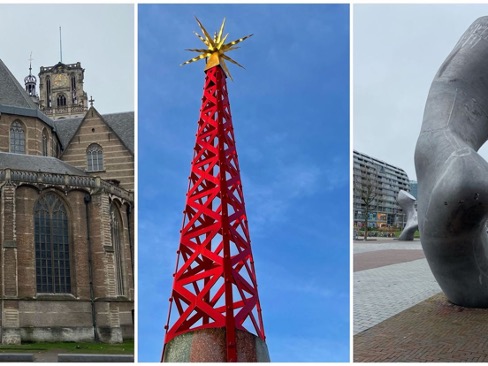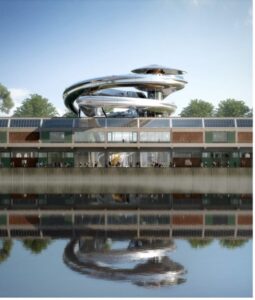
Did you know? Fun facts about Rotterdam! 2nd edition
‘The real Rotterdammer comes from outside; Rotterdam’s history as a city of migration. For centuries, merchants, job-seekers and refugees have been coming to the port city on the Maas. Some, like the French Huguenots, were welcomed with open arms. Characteristic of twenty-first-century Rotterdam is the phenomenon of ‘superdiversity’. By this is meant that the city has become so diverse that one can no longer really speak of minorities and majorities. This new face of the city comes to life on the West Kruiskade, for example, with a diverse range of shops and eateries. A creative urban culture has also emerged, separate from the established cultural institutions. Policy choices change according to the zeitgeist and the political colour of the city government – sometimes they are strict and prescriptive, sometimes more relaxed. Thus, the establishment of a mosque or an Islamic school can be a stumbling block, but also a means of integration. The debate makes one thing incontrovertibly clear: Rotterdam derives its identity from migration.
A swampy area where no one wants to live. In the year 1270, a dam was built in the Rotte river after which the settlement emerged that grew into the city of Rotterdam. If you look at the maps from that time, you see that it was a swampy area. You could hardly live here. In the Middle Ages, people who came to the city had no rights. ‘You only had civil rights if you were born in the city or if you married someone from the city,’ says Van de Laar. ‘Those who came from outside could buy city rights. They called that gatemanship. If you had little money, you could provide services. If you delivered 3 thousand bricks for the construction of the Laurenskerk, the city right was your reward.
Of the 1.2 million migrants who came to the Holland region between 1600 and 1800, half came from abroad. This makes for an increasingly diverse Rotterdam population during that period. Before 1600, they are mainly Flemish, in the 17th century new groups arrive, especially from France, Scandinavia, Poland, Switzerland and Italy.
The migrants of the 20th century are the migrant workers from countries like Spain, Italy, Greece, (former) Yugoslavia, Turkey and Morocco. ‘A working city that is doing well needs migrant workers,’ says Scholten. ‘That is of all times. If you look at history, the periods when Rotterdam needs relatively few labour migrants are the phases when the city was not doing so well.’ Source: The real Rotterdammer comes from outside, Paul van de Laar & Peter Scholten, Erasmus University. https://www.gmdcentre.nl/news/the-real-rotterdammer-is-from-elsewhere
In the next edition, certain groups living in Rotterdam will be highlighted.
 A brand new museum, The Fenix, telling the stories of migration through the lens of contemporary art, will open its doors in Rotterdam on 16 May 2025. Located in the city’s historic docks, in a former transshipment shed of the Holland America Line, this museum promises to make a significant contribution to the recognition of the history of migration in the Netherlands.
A brand new museum, The Fenix, telling the stories of migration through the lens of contemporary art, will open its doors in Rotterdam on 16 May 2025. Located in the city’s historic docks, in a former transshipment shed of the Holland America Line, this museum promises to make a significant contribution to the recognition of the history of migration in the Netherlands.
At Fenix you’ll find art by over a hundred artists, documentary photography by a hundred and thirty photographers from across the world and real-life stories in a landscape made of two-thousand suitcases. https://fenix.nl/en/what-is-fenix/
